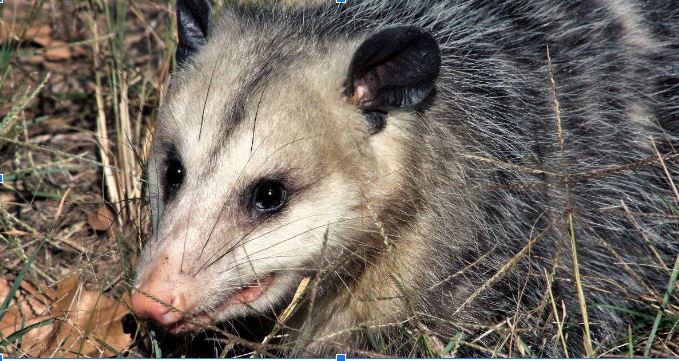Urbanization significantly alters the natural habitat, increasing human and wildlife interactions. Understanding how urbanization impacts wildlife removal is crucial for effective management and ensuring public safety and animal welfare. As cities expand, wildlife finds itself displaced and adapts to urban environments, which creates unique challenges for urban wildlife removal.
In places like Garland, the struggle to manage urban wildlife often highlights the need for effective city wildlife management strategies. Due to habitat loss, various species, from raccoons to opossums, may seek shelter in backyards and attics. These situations pose safety risks and complicate the removal process, requiring specialized approaches to address the needs of the community and the wildlife involved.
Effective urban wildlife removal prioritizes understanding animal behavior, implementing humane solutions, and fostering community awareness. Your engagement in local wildlife management strategies can contribute to a balanced coexistence, minimizing human-wildlife conflicts while ensuring that removal practices are ethical and practical.
Urbanization and Its Effects on Wildlife
Urbanization significantly impacts wildlife behavior and habitat. As cities expand, various species encounter challenges that can alter their survival and interaction with urban environments.
Expansion of Urban Areas
The expansion of urban areas leads to habitat loss and fragmentation. As neighborhoods grow in places like Garland, natural habitats are cleared to make room for infrastructure, which disrupts local ecosystems.
Wildlife species, particularly those dependent on specific habitats, experience decreased living space. This results in competition among remaining individuals and may force animals to adapt to urban settings or migrate to less developed areas.
Moreover, human-wildlife interactions become more frequent. With fewer places for animals to thrive, urban wildlife encounters are increasing, raising concerns and necessitating wildlife control measures.
Wildlife Behavior and Habitat Changes
Urbanization alters wildlife behavior in several notable ways. Animals often adapt their feeding, breeding, and movement patterns in response to the presence of humans. These adaptations can include nighttime activity or nesting in atypical locations.
Understanding animal behavior is essential as wildlife control becomes more common in growing cities. For instance, species that traditionally avoid humans may become bolder in urban settings, leading to increased conflicts.
Additionally, the introduction of artificial light and noise in urban environments can disrupt natural rhythms, affecting breeding cycles and feeding behaviors. These changes underscore the complex relationship between urban development and wildlife adaptation.
Challenges in Urban Wildlife Removal
Urban wildlife removal presents a range of challenges that require careful consideration. You must navigate ethical implications alongside public safety and health concerns. Both of these elements play a critical role in developing effective removal strategies.
Ethical Considerations
Ethical considerations are paramount when addressing wildlife removal. You may face dilemmas about the humane treatment of animals during the removal process. Many advocates argue for methods that minimize suffering, emphasizing relocation over extermination.
In cities like Garland, changing wildlife removal practices reflect these ethical concerns. Techniques such as trapping and transporting animals humanely are increasingly favored. Additionally, community education on coexistence with local wildlife can minimize the need for removal, promoting a more ethical approach overall.
Public Safety and Health Concerns
Public safety and health concerns significantly influence urban wildlife removal strategies. Animals often pose risks through potential bites, disease transmission, and property damage. When planning removal, you need to assess these risks, especially in populated areas.
Cities must also consider the ecological impact of removal practices. For example, removing raccoons or skunks can disrupt local food chains. In Garland, ongoing monitoring of wildlife populations is essential to balance safety with ecological health, ensuring communities remain safe while considering the broader implications of wildlife presence.
Adaptive Strategies for Wildlife Management
Managing wildlife in urban environments requires innovative approaches that account for both ecological balance and human activity. Effective strategies utilize technology and policy changes to adapt to the pressures of urbanization.
Technological Innovations
Advancements in technology play a pivotal role in wildlife management. For instance, drone surveillance can monitor wildlife populations and their habitats, allowing for real-time data collection. These drones can cover vast areas quickly, identifying signs of wildlife intrusion or habitat disruption.
Additionally, remote cameras help track animal movements and behaviors, providing insights into how they adapt to urban settings. GPS collars also aid in monitoring wildlife, offering data on their interactions within city habitats.
Smartphone applications allow residents to report wildlife sightings, contributing to community-driven data collection. Integrating these technologies into city wildlife management strategies improves responses and helps create habitats that accommodate urban growth.
Policy and Urban Planning
Effective policy frameworks are essential for integrating wildlife management into urban planning. Zoning laws can be developed to protect critical habitats while allowing for sustainable growth. It’s crucial to balance development with the needs of local wildlife.
Urban planners can implement green infrastructure, such as wildlife corridors and roofs. These features provide safe passages for animals and enhance the ecological value of urban spaces.
Engaging communities in wildlife education fosters a culture of coexistence. Encouraging residents to adopt preventive measures against wildlife incursions, such as securing garbage and maintaining yards, ensures that urban wildlife and human populations can thrive side by side.For professional assistance in managing wildlife challenges, consider calling Critter Stop at (214) 234-2616. With a fantastic reputation and positive customer reviews, Critter Stop provides high-quality work and excellent customer service to solve your wildlife removal needs.




